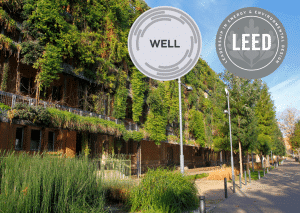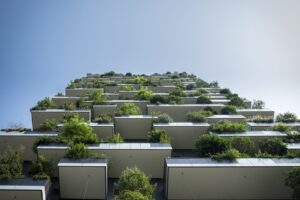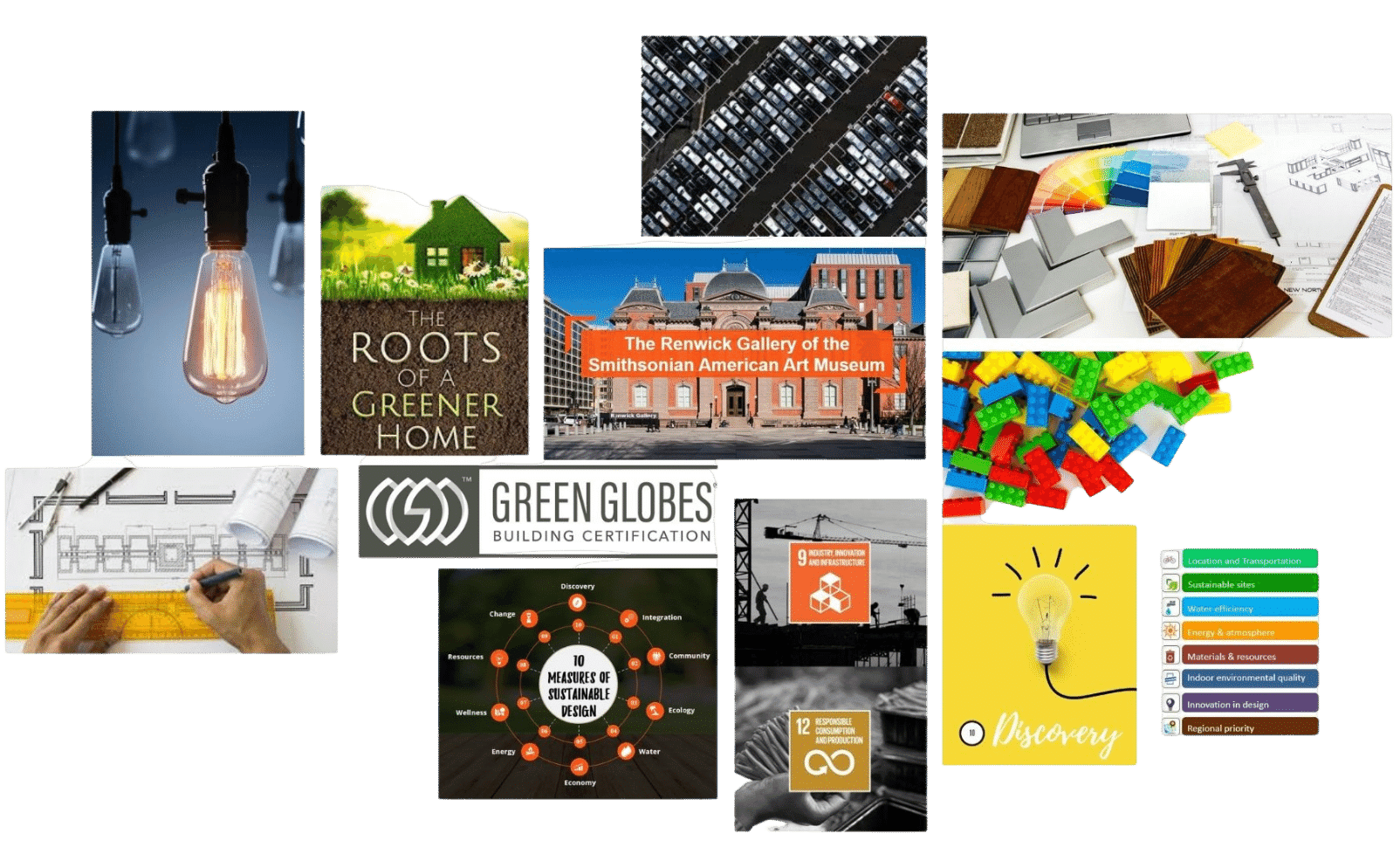Man has been exploiting Mother Earth for natural resources since forever. Till now, it seemed as if the amount of natural resources on our planet was unlimited.
But not anymore!
Due to man’s insatiable greed for energy and resources, the time has come that we on the verge of running out of essential resources with a monster called climate change breathing down our necks telling us to STOP!
Today, we desperately need to cut carbon emissions, limit energy/resources usage, stop drowning the planet in plastic and increase the green cover as much as possible.
Thankfully, an increasing number of architects, engineers and builders realize this, as is evident from the momentum green buildings are gaining across the globe.
There is no doubt about it that the building sector is a resource-intensive industry.
As such, in the last decade, the international market for green construction projects has grown at a remarkable pace, and is expected to continue growing in the coming years. This trend is being witnessed not just in economically prosperous parts of the world like the US and other prominent European nations, but also in fast-developing economies in the Asia-Pacific region, South America, and the Middle East.
Every year, the number of government agencies, universities and real estate developers incorporating green design ideas into their buildings and structures is increasing, and this trend isn’t likely to abate any time soon given its fast growing popularity among the consumers as well as the designers.
Listed below are the top 10 energy trends for green buildings that are expected to revolutionize the way we look at the building sector.
Top 10 green buildings trends
1. Net Zero Energy Buildings
Generally speaking, net zero energy buildings produce enough renewable energy to meet their own annual energy consumption requirements, thereby reducing the use of nonrenewable energy in the building sector.
Today, private commercial property owners have a growing interest in developing zero energy buildings to meet their corporate goals, and in response to regulatory mandates, federal government agencies and many state and local governments are beginning to move toward
zero energy building targets.
Achieving zero energy is an ambitious yet increasingly achievable goal that is gaining momentum across the globe and this trend is likely to continue as the costs of alternative energy technologies decrease and the costs of traditional fossil fuels increase.
2. Energy Efficiency is the Way to Go
The building industry is a vital element of any economy but has a significant impact on the environment. By virtue of its size, construction is one of the largest users of energy, material resources, and water, and it is a formidable polluter.
Therefore, it is particularly important for this sector to minimize its usage of resources and become as energy efficient as possible.
“Energy efficiency” basically means achieving more with less. For example, choices of materials used in construction are important to reduce energy consumption of a building through reduced solar heat gain or loss, thus reducing air-conditioning loads.
Use of passive energy design like natural ventilation, landscaping by vegetation, use of water bodies for evaporation and cooling etc. ensure significant reduction in energy consumption by conventional air conditioning and artificial lightning in a building.
Further, architects believe that well designed and installed insulation can reduce the amount of heat lost through the building envelope by at least half, so insulating the building envelope goes a long way in achieving energy reduction.
3. Renewables to Lead the Way
Renewable energy is the rage these days. It has incredible momentum, not only in terms of deployment and costs but in terms of public opinion and popularity. To put it simply, everyone loves renewable energy. It is cleaner, it is high-tech, it is new jobs; in short, it is the future.
Further, according to a 2018 report from the International Renewable Energy Agency, the cost of renewable energy is falling fast enough to be consistently cheaper than the use of fossil fuels within a few years. The renewable energy sector remained remarkably resilient in 2018, and the trend is likely to continue into 2019 and the years to follow.
4. Biomimicry
The concept of biomimicry is all about the ideas inspired by nature and it has been offered as an optimal solution for the conflicts between nature and human activities. It basically refers to the design of products and materials that draws solutions from living things.
It provides a wide range of solutions for structural efficiency, water efficiency, zero-waste systems, thermal environment, and energy supply, which are essential for any sustainable building design.
Think of insulation based on cacti or wastewater treatment that works like wetlands. Or better still, let us talk about buildings whose designs were inspired by the work of a tiny insect, the termite.
The termite is one of nature’s more accomplished builders, erecting the tallest structures on our planet (when measured against the size of the builder), and maintaining a constant temperature inside despite wide temperature swings outside.
Taking inspiration from termites, African architect Mick Pearce designed two buildings – the Eastgate Building in Harare, Zimbabwe, and the Council House 2 Building in Melbourne, Australia – and both are a classic example of how a building can be ventilated and cooled by entirely natural means.
So although biomimicry is being applied in industries, it has grown particularly popular in products related to the built environment.
5. More Emphasis on Water Conservation
As the global economy is booming, water resources are depleting at an alarming pace. The whole world is currently sitting on the edge of a major water crisis. As such, water conservation is the need of the hour and the sooner we realize this, the better it will be for us and the future generations.
Now the construction sector is one of the major consumers of water. Water used to operate buildings is also a significant component of national water consumption. Therefore, demand for utilizing water-efficient plumbing fixtures like ultra-low flow toilets and urinals, waterless urinals, low-flow sinks, low-flow showerheads, and water-efficient dishwashers and washing machines is on the rise.
Design for dual plumbing to use recycled water for toilet flushing or a gray water system that recovers rainwater or other non-potable water for site irrigation is also becoming increasingly popular. Gray water is produced by activities such as hand washing, and does not need to be treated intensively as sewage. It can be recycled in a building to irrigate ornamental plants or flush toilets.
Rainwater harvesting is also a new trend that is being adopted by people in many regions of the world.
6. Waste-to-Fuel
Most environmentalists agree that ‘Waste-to-Fuel’ might work best as a transitional technology until full renewables take over.
eThekwini Municipality is one of South Africa’s largest urban areas, including Durban and its suburbs. As is typical in the developing world, much of the solid waste stream consists of organic waste.
This organic waste is often improperly disposed of, creating an aesthetic and health hazard. The waste is left to rot, releasing climate-altering methane. The municipality reasoned that if the gas is going to be released anyway, they might as well put it to use.
The same system is being replicated in buildings.
7. Smart Buildings Coupled with Distributed Energy Systems

With non-renewable energy sources like fossil fuels becoming increasingly unreliable and unhealthy for the planet, more diverse and complex systems of energy generation are creating opportunities for building owners to seek new avenues of energy sources. Both existing as well as new buildings need to be built with renewable energy sources and smart energy systems at their core. With the integration of Distributed Energy Systems (DES), buildings can achieve exactly that.
DES covers energy in the forms of electricity, heating and cooling, thus offering building owners and energy consumers various opportunities to reduce cost as well as improve the reliability and security of additional revenue.
8. Climate-change Resistant Buildings
With the intensity of hurricanes, storms, droughts, heatwaves, cold spells and floods going from bad to worse with each passing year, the reality of climate crisis is staring at us hard in our faces.
Now the bad news is that extreme weather events are expected to become more common as the climate changes, but most current buildings are only equipped to protect us from weather, not extreme weather.
So climate-change resistant or ‘future-proof’ buildings are the need of the hour and the building experts need to consider mitigation measures in the design and construction of new buildings so that they operate on a resilient level against extreme weather pattern changes.
9. Alternative Building Materials
While civilization has heavily relied on concrete to build structures, its carbon footprint has led architects and engineers to look into alternative building materials. There has been a surge in alternative building material interest around the world, and 2019 will see accelerated growth in such materials being used that are both durable and have lower environmental impacts.
For example, bamboo has been used as a traditional building material for centuries, and has recently gained popularity for its sustainability in green buildings. Bamboo is a cost-effective building material as it is easily grown and harvested, making it a sustainable building material source, not to mention its aesthetic appeal too in building design.
Recycled plastic is also a durable and long-lasting building material. With the growing plastic pollution crisis threatening the natural environment, researchers are starting to create concrete that has added recycled plastics, which reduces the need of mining and extracting new building material components.
10. Low-emitting Windows and Cool Roofs
Low-emitting windows, coated with metallic oxide, to block sun’s harsh rays during summer and keep the heat inside in the winter are also gaining popularity. Such windows have the potential to significantly reduce heating and cooling costs of buildings.
According to Dubai-based green buildings expert Sunanda Swain, “Transparent solar window panels can also be incorporated into awnings, curtain walls, glass facade or as overhead glazing units.” She explains, “These increase access to direct sunlight while providing additional architectural benefits such as passive shading.”
Another promising innovation is in the form of cool roofs which is made of special tiles and reflective paints to reflect sunlight. Cool roofs have high levels of solar reflectance and thermal emittance, and help in reducing the heat island effect in urban habitats, especially in arid areas like the Middle East.
With inputs from:











